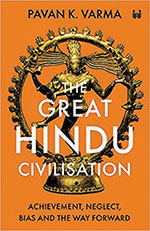The story of Indian civilization has been recounted and debated over considerably in India and beyond. For this, scholars have used the term Indus Valley Civilization or the Harappan Civilization, after Harappa, the first excavated site. Almost all research works on Ancient India recognize the Indus Valley Civilization as one of the three greatest civilizations alongside Egypt and Mesopotamia. To John Marshall who supervised its excavations, it was ‘in some respects even superior to Mesopotamia and Egypt’.1 Curiously enough, none of the works has used the term Hindu Civilization. Even Mahatma Gandhi, the ardent admirer of India’s ancient past records it as ‘Indian Civilization’.2 Majority of scholars also believe that the makers of this civilization were Dravidians, the earliest race of India. And so does Jawaharlal Nehru.3 Later, with the coming of Aryans from Eurasia, this civilization came to an end and a new race developed. This race had their distinct language, religious beliefs and practices. But all these were blended with that of the indigenous people living in the region and thus from this assimilation the Vedic Civilization emerged and flourished.4
The Great Hindu Civilsation is a new invention to describe the Indus Valley and Vedic Civilization or for that matter Indian Civilization.

